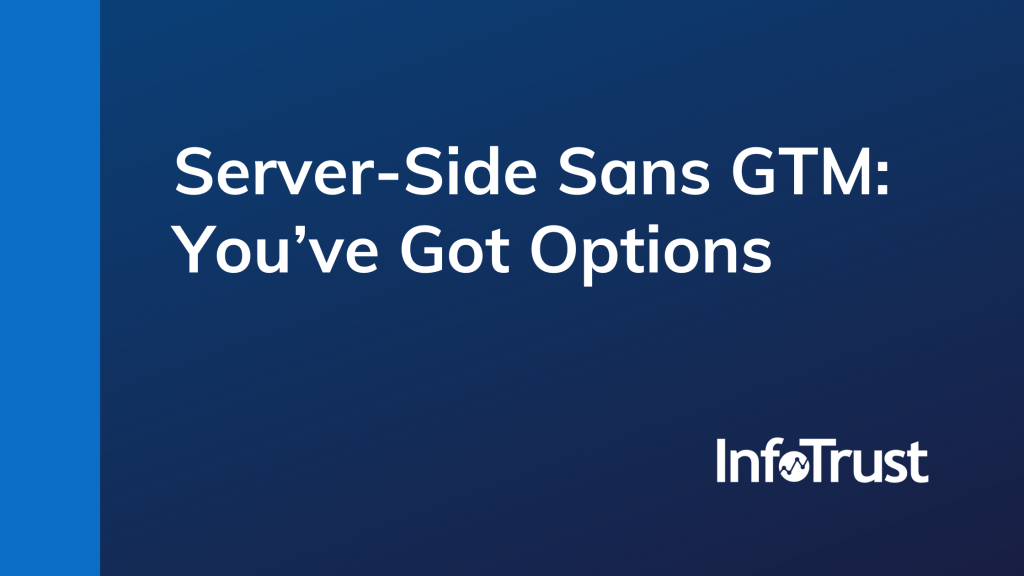When Google releases a new product, there is always an inevitable amount of hype—and server-side GTM (Google Tag Manager) has been no exception. As more changes come about in the data world with browsers clamping down on data leaks and privacy legislation being rolled out, this move by the big G was met with a mix of awe and expectation, as well as a fair amount of confusion. Was this the answer we had been waiting for?
The Power of First-Party Data
In the privacy-centric world of data, owning your own data is the first step towards working with reliable data. Having full control of the data pipeline—from the source to the destination—is what server-side gives you. You are effectively turning your data-sprinklers into a data-firehose. Moving to first-party data is a firm way to take control and earn your customer’s trust, as well as guaranteeing the highest levels of quality for the data you consume.
What Google Brings to the Table
Server-side tagging has been around for a while, with some mature products already in the market, so one could say that Google has arrived a little late to the party. But, like most latecomers, they have arrived with a bottle of something new and fresh, which raises a few eyebrows among those who were not happy with the current options. So while most server-side tagging solutions aim to provide value by building features on top of the data they stream, GTM focuses primarily on providing an easy-to-manage infrastructure and, at the time of writing, is more of a data streaming platform than a tag manager. This is fantastic news if you love getting your hands dirty with raw data but, if you like your food cooked, you may prefer other alternatives.
Other Options to Consider
The value most of these products focus on is your users. By offering state-of-the-art segmentation capabilities, these companies offer attractive value propositions to counter the extra hurdles brought forth by server-side tracking. This is the case of Tealium, for example, which provides a wealth of extra features to help you not only be creative with your segmentation, but take advantage of that immediately through the client-side tag manager, allowing you to use your definitions to enrich your data or decide if a tag should fire or not. Want to request feedback only from customers likely to churn? Tealium has you covered.
Metarouter and Segment, on the other hand, offer a similar approach to the path Google has followed and focus less on automating and more on making it extremely easy to route your data. Both tools have a wealth of connections to different third-party services out of the box and offer mechanisms for you to build your own. On top of that, they also offer tools so you can finetune the information you gather about your users, allowing you to define traits and characteristics which you may use down the pipeline. Additionally, you can control everything using beautifully crafted user interfaces.
So, to summarize:
Moving to server-side is interesting if you:
- Want to move to first-party data
- Have custom datasets in a cloud-based data lake (BigQuery, AWS S3, etc.)
- Are obsessed with data quality
You don’t need to rush into server-side data just yet if you:
- Rely on third parties to create audiences or identify your users
- Rely on tags that require access to your content or interaction with your UI
- Aren’t using first-party datasets outside of your analytics tooling










